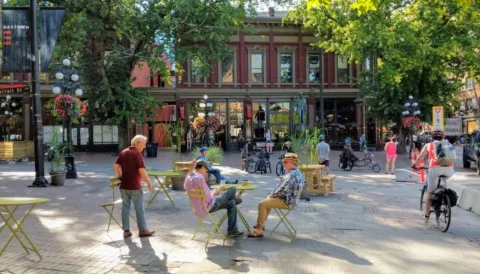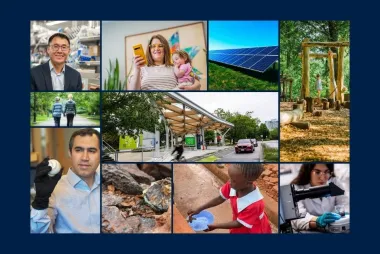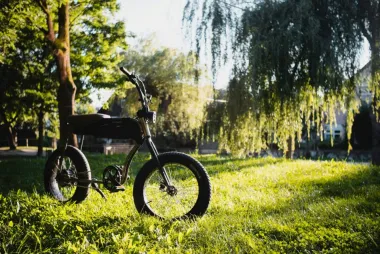What will our cities look like after COVID-19?

The past few months have been a highly unusual time as people sheltered in place to prevent the spread of COVID-19. Schools, streets and stadiums fell silent, tourist hot spots became ghost towns, and sidewalk traffic largely consisted of grocery and meal deliveries.
In an article published this week in Cities & Health, UBC planning experts Jordi Honey-Rosés and Erick Villagomez analyzed the implications of these changes on city planning and space design. Alongside other scholars from Chile, China, Mexico, India and Spain, they looked at the measures taken by major cities to cope with the pandemic, and how those efforts have transformed — and continue to transform — urban life. They share their conclusions in this Q&A.
What were the most striking immediate impacts of the pandemic on global cities?
Jordi Honey-Rosés: The pandemic is transforming city building, design, energy flows, mobility patterns, housing preferences, green spaces and transportation systems. Many of these changes may be temporary, while others may be permanent. In some cases, cities are accelerating the implementation of changes they had in the works already, such as rolling out planned bicycle infrastructure, street calming projects or sidewalk re-designs. In other cases, planners and neighbours are making things up as they go along, experimenting, testing and relying on low-cost interventions.
Erick Villagomez: COVID-19 understandably produced a drop in pedestrian traffic associated with commercial activity. According to the most recent Google Mobility Report, mobility associated with retail and recreation across Canada still sits at about 17 per cent below January-February median levels. Although this rate continues to rise slowly, the reduced pedestrian traffic to-date has already had strong effects on many local businesses, many of which have had to close their doors indefinitely. This trend will likely continue until a viable solution to the pandemic is found.
What changes do you see taking shape over the longer term?
Honey-Rosés: Cities may look at implementing low-cost and temporary street calming and pedestrianization projects. Streets might need to be re-designed. With online shopping and home food delivery having taken off, there is huge demand for curbside street parking, not only to meet new delivery needs, but also to free space for pedestrians.
The look and feel of cities that rely on tourism will change, both in negative and positive ways. So, while businesses may continue to struggle, we are seeing an increased interest in building a stronger pedestrian-friendly environment. In Toronto, for example, the City accelerated plans to install cycling infrastructure along the popular Danforth Avenue as a part of COVID-19 relief plans.
Villagomez: The intensified use of many neighbourhood parks over the pandemic seems to have sparked a number of changes. There is now a greater appreciation of the importance of providing easily accessible opportunities for the enjoyment of nature and a diversity of recreation activities. Cities may revisit the potential of unused spaces such as brownfield sites and building rooftops — there is a staggering number of rooftops that are underused in many cities and could be converted into rooftop gardens.
What other trends will likely shape our public spaces and interactions?
Honey-Rosés: Our sense of place and space may be permanently transformed. Public space might still be a place for social interaction, but it may be more difficult for the spontaneous and informal. The pandemic may limit our ability to develop new relationships, especially among strangers.
That said, the pandemic has given us an unprecedented opportunity to examine the links between urban planning, public space and wellbeing. Our future city is not preordained, but will be the result of specific decisions about public space. We hope citizens will talk to their leaders and come together with planning and policy professionals to build healthier cities during this crisis and beyond.
Villagomez: I have been thinking and writing about the implications of transforming cities to meet the standard six-foot social distancing protocols. The everyday spaces we inhabit have been shaped by millennia based on dimensions that are much smaller — three to four feet being the most common. Right now, people are attempting to adapt systems, behaviours and built spaces based on three-to-four-foot distances to the larger social-distancing dimensions. The results have been very interesting, showing a lot of creativity and innovation. But it’s also already evident that cities cannot and will not fully change in every respect to allow six-foot distancing. This will continue to evolve as restrictions change.


